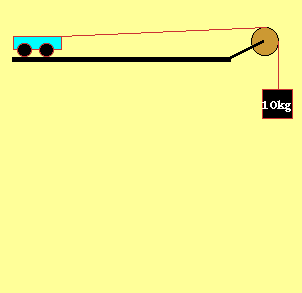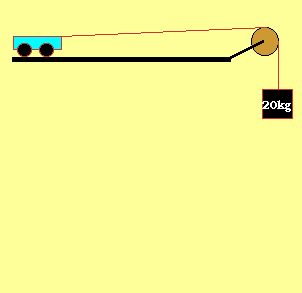
|
A 10 kg mass is tied to a 5 kg cart as shown on the left. The 10kg mass is dropped and accelerates at a rate of 9.8m/s/s pulling the cart along the table. What is the force acting on the cart? Assume no friction.
The
total mass that accelerates at 9.8m/s/s is 15kg( 10kg mass + 5kg cart).
So the expression below |
Click to hide the solution
